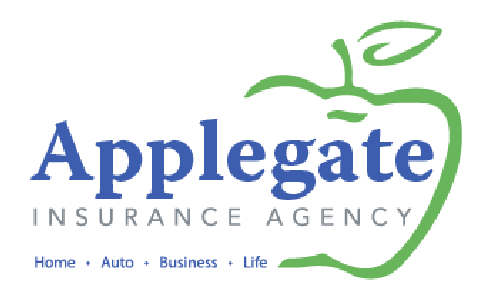Wherever it rains, it can flood, regardless of your proximity to a body of water.
What’s the #1 natural disaster in the U.S. and worldwide?
It’s Flood. The damage from floodwaters surpasses the losses caused by hurricanes, tornadoes, or earthquakes – as horrifying and powerful as those catastrophic events are but pale in comparison. However, most Homeowners are not insured for Flood damage because it’s excluded from all Homeowner Policies. Many homeowners believe that they only need flood insurance if their mortgage company or bank requires it, which is mostly when the home is located in areas categorized as “high risk” (flood zone A or V). The fact is, you don’t need to live on the coast to be at risk. Wherever it rains, it can flood, regardless of your proximity to a body of water.
COMMON AND COSTLY NATURAL DISASTER IN THE UNITED STATES?
Only you can decide. During the last five years, the average flood claim was $46,000. Below is a chart of significant flooding, that has occurred recently excluding Hurricanes:
| EVENT / DATE | CLAIMS PAID | AVERAGE CLAIM |
|---|---|---|
| TEXAS FLOODING MAY-JUN 2015 | 6,709 | $67,463 |
| SUPERSTORM SANDY 2012 | 130,352 | $63,745 |
| TORRENTIAL RAIN SEPT 2009 GEORGIA | 2,067 | $60,107 |
| TORRENTIAL RAIN TENNESSEE 2010 | 4,114 | $55,974 |
| LATE SPRING STORMS JUNE 2011 | 2,433 | $55,326 |
| FLORIDA FLOODING APRIL 2014 | 2,134 | $51,703 |
| TORRENTIAL RAIN TEXAS 2016 | 4,748 | $50,392 |
| LATE WINTER SEVERE STORMS 2016 | 4,751 | $48,869 |
| MIDWEST WINTER STORMS 2015 | 2,169 | $40,552 |
| COLORADO FLOODING SEPT 2013 | 1,734 | $39,625 |
| PA, NJ, NY FLOODS JUNE 2006 | 6,428 | $35,671 |
| SOUTH CAROLINA FLOODING OCT 2015 | 3,876 | $48,869 |
REMEMBER THAT 25% OF ALL FLOOD CLAIMS ARE LOCATED OUTSIDE OF “HIGH RISK” A AND V FLOOD ZONES!
WHAT’S COVERED?
A standard flood insurance policy covers your home and contents when damage is caused by rising water.
Standard Coverages
- Building, which is the insurance on the primary home/building on the insured property.
- Personal Contents, which is the insurance that protects the possessions inside of your home.
The coverage offered in a Flood Insurance policy may sound like the coverage you already have in your Homeowner’s policy, but that’s not the case. It’s different than your Homeowner’s insurance because a typical Homeowner’s policy specifically excludes water damage that results from rising water. For the purpose of insurance, “Rising” is the key word to distinguish flood damage from water damage.
The simplest definition of a flood is a large overflow of water onto land that is usually dry. Floods can appear and recede as quickly as it happens with a flash flood which occurred in Knoxville, TN in March of 2019 and caused over $43.5 million in damages. In some spots that day water hit the 500-year flood mark, a term used to estimate the chances of a flood happening in an area.
What Causes a Flood?
Flood prevention is a matter of great concern. Floods are primarily a natural phenomenon, but human actions, such as poorly designed infrastructure, can set the stage for a later flood. Understanding the causes is essential to either flood prevention or reducing future flood damage.
Most floods in Tennessee are the result of one of the 5 following causes, some natural and some the result of human actions.
1. Heavy Rainfall
For many years, people have designed their infrastructure to move rainwater from where it falls to reservoirs and basins. Most of the time, the system works. No one other than those who support the infrastructure gives a second thought to where the water goes. Occasionally, a very heavy rain will be too much for the system to handle. The water accumulates faster than it can be taken away. First the streets flood then the homes and businesses are flooded by the rising waters as well.
2. Overflowing Rivers
It’s entirely possible to experience river floods without heavy rainfall in your area like the residents of MEMPHIS, TN eight years ago when the Mississippi River rose past its banks and flooded parts of the Mid-South, becoming one of the largest and most damaging recorded floods along the river in the past century. In an devastating display of Mother Nature the river reached its highest level, 48.03 feet on May 10, 2011, second only to 48.7 feet in 1937 which is the record. People living near any rivers are very aware of the fact that if a large storm dumps tremendous quantities of water into the river upstream, then that excess water will flow downstream. This type of flood can be catastrophic but is often predictable and manageable.
3. Broken Dams and Levees
Broken dams can cause an incredible amount of damage. In the U.S., most dams and levees were built many years ago. When faced with more water than they can handle, these structures fail, releasing raging waters upon anything in its path. While our infrastructure normally works very well, any structure could potentially fail.
Three dams are among the largest — and potentially most dangerous — in Tennessee are Boone in Kingsport, Pickwick in Hardin County near Savannah, TN & Center Hill in Lancaster, TN. But they’re not the only ones that have raised concerns among dam-safety officials. Flash floods that swept across 49 counties in May 2010 led to the failure of seven dams statewide and caused damage at several others. More than a dozen dams in West Tennessee alone required significant repairs.
All told, there are more than 1,200 dams in Tennessee, including 273 rated as “high hazard” because their failure likely would lead to the loss of life. But nearly half of the state’s dams, including 69 rated as high hazard, are exempt from regulation and government inspections because they’re classified as farm ponds.
4. City Drainage Basins
Many large cities, such as Nashville, TN, build concrete drainage basins to contain and manage rainwater. When the rain is especially heavy, the basins can fill up and overflow into low-lying areas which was one of the many unfortunate events that occurred when Nashville shattered nearly every rainfall record conceivable the weekend of May 1-2, 2010. According to the National Weather Service, 13.57 inches of rain was measured during a 36-hour period. Nearly 11,000 properties were damaged or destroyed in the flood, and 10,000 people were displaced from their homes. The flood caused more than $2 billion in private property damage and $120 million in public infrastructure damage in Nashville.
5. Lakes, Rivers, and Reservoirs With Steep Sides
A fast runoff of water in a steep-sided narrow channel will rise quickly. This can occur with either natural or man-made channels.
How Do I Protect My Home?
Unfortunately, your not in control as you can see from the 5 primary causes. Could you afford to rebuild your home and replace all your belongings? Simply put, your only defense is to purchase a complete Flood policy? That’s how Applegate Insurance Agency can help. We offer peace of mind from the unexpected with Flood Insurance. If you live in a designated flood zone, your mortgage holder requires flood insurance. However, as happened this year, devastating floods can happen in areas where flooding isn’t anticipated.
Get a flood insurance quote from Applegate Insurance in less than three minutes by calling us at 865-240-2348. Discover how affordable it is. Knowing you’re covered will let you sleep at night, except maybe thunder.



